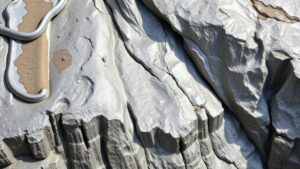The Discovery of Alaska’s Gold-Bearing Porcupine Creek in the Chilkat Valley
The Discovery of Alaska’s Gold-Bearing Porcupine Creek in the Chilkat Valley
Alaska’s gold rush history is marked by many significant events, but the discovery of gold at Porcupine Creek in the Chilkat Valley stands out as a pivotal moment that transformed the region economically and socially. This article explores the historical context, the process of discovery, its implications, and the lasting impact of this discovery in the annals of Alaskan mining history.
Historical Context
Before the discovery of gold in Porcupine Creek, Alaska had already garnered attention during the Klondike Gold Rush in the late 1890s. Reports of rich gold deposits in Canadian territories attracted thousands to the Yukon area. This surge of prospectors set the stage for further explorations into Alaska, particularly the southeast regions like the Chilkat Valley.
- Klondike Gold Rush (1896-1899): The Klondike Gold Rush catalyzed a mining frenzy across Alaska and neighboring regions.
- Chilkat Valley: The fertile and resource-rich Chilkat Valley was already inhabited by the Tlingit people, who had been living off its resources for centuries.
The Discovery of Gold
The actual discovery of gold-bearing deposits at Porcupine Creek happened in 1910 when prospector Henry “Harry” F. Jimmy and a partner ventured into the area. They observed unusual rock formations and mineralization that prompted them to investigate further. r efforts paid off when they successfully extracted gold, prompting a wave of interest and excitement.
- Resource Exploration: The systematic exploration in the region led to the confirmation of substantial gold deposits.
- Impact on Prospectors: The discovery led to an influx of prospectors and miners hoping for their fortunes, reminiscent of the Klondike rush.
The Economic Impact
The discovery of gold in Porcupine Creek had significant economic implications for the region. It established a mining community that not only provided jobs but also stimulated the local economy through related industries. The increase in population created demand for goods and services, further enhancing business prospects.
- Creation of Towns: The influx of miners led to the establishment of new settlements, such as Porcupine and nearby Haines.
- Market Dynamics: Local merchants and service providers capitalized on the growing population, leading to the economic diversification of the area.
Gold Mining Techniques
Mining operations varied in their techniques during this period, with methods evolving significantly to adapt to the unique challenges presented by the Alaskan environment. Initial mining efforts often relied on basic tools and methods, while later operations introduced more sophisticated technologies.
- Panning: Prospectors originally used simple panning techniques to manually separate gold particles from soil and gravel.
- Dredging: In later years, mechanized dredging techniques became popular, enabling miners to process larger volumes of material more efficiently.
Environmental Considerations
As mining expanded in the Chilkat Valley, environmental concerns began to surface. The delicate ecosystems faced threats from mining activities, raising questions about sustainability and conservation. It became increasingly important to balance economic development with the preservation of natural resources.
- Ecosystem Impact: Gold mining operations often led to soil erosion and water pollution due to the runoff from mining sites.
- Regulatory Response: In the decades following the initial gold discovery, regulations and environmental protections began to emerge to safeguard these critical habitats.
Legacy of Porcupine Creek Gold Discovery
The discovery of gold at Porcupine Creek remains an integral part of Alaskas rich mining history. It not only contributed to the economic growth of the area but also highlighted the enduring human spirit of exploration and resilience. Today, the region still reflects the impact of the gold rush, with nostalgia for the mining era evident in local culture and tourism.
- Cultural Heritage: The legacy of mining continues to attract history buffs and tourists eager to learn about the gold rush.
- Continued Mining Activity: Although the gold rush has subsided, mining remains a vital industry in Alaska, utilizing modern technology to access deposits previously deemed unreachable.
Conclusion
The discovery of gold-bearing Porcupine Creek in the Chilkat Valley served as a cornerstone for the development of Alaskas mining industry. It shaped the economic landscape, influenced social structures, and posed environmental challenges that are still pertinent today. As we reflect on this historical event, it is essential to approach future developments with a commitment to sustainable practices that honor both the economic benefits of mining and the preservation of Alaskas stunning natural environment.
Actionable Takeaways: Understanding the complexities of mining history can provide valuable insights for current and future resource management practices. It is crucial for stakeholders in the mining industry to strive for sustainability, ensuring a balance between economic growth and environmental stewardship.

